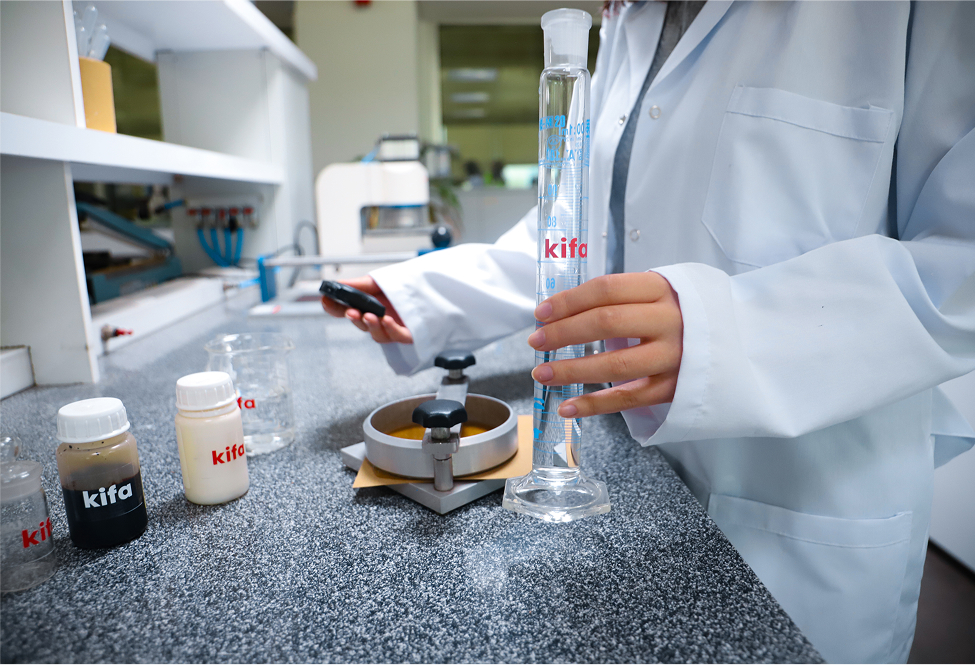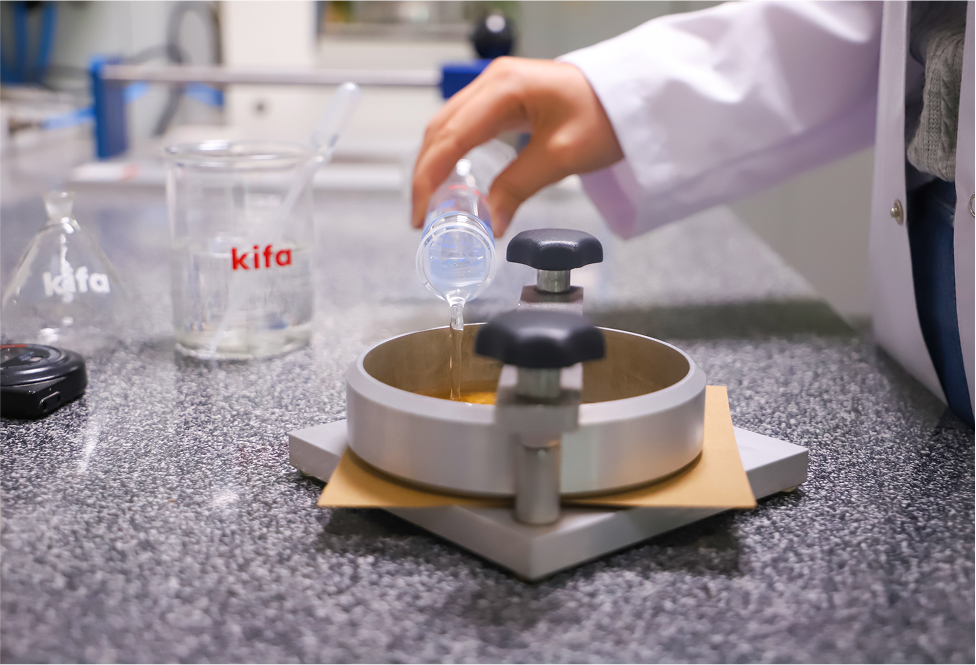
Product Quality Control and Physical Property Tests
Advanced Laboratory Equipment
At our facility, advanced laboratory equipment is used to ensure the quality and consistency of our paper chemicals.
Particle Size Analysis
The particle size distribution, which affects product performance and stability, is measured with high precision using advanced particle analyzers. This analysis is critical to ensuring product homogeneity and maintaining desired dispersion properties.
Solids Content Determination
The amount of active solids in our products is determined using standard gravimetric methods or modern moisture analyzers. Solids content ensures product effectiveness and concentration control.
Zeta Potential Measurement
We analyze the colloidal stability and surface charge balance of our products.
The stability of AKD emulsions directly impacts water repellency and product quality in papermaking. Zeta potential measurements help optimize formulations for long-term storage and performance.
pH Measurement
The acidic or basic nature of chemical solutions is regularly monitored with high-precision pH meters, ensuring product stability and application performance.
Density Test
To ensure conformity with formulation standards, product density is measured using precision densitometers. This is essential for monitoring solution concentration and quality consistency.
Viscosity Measurement
Flow characteristics are evaluated using rheometers or viscometers to ensure optimal application performance in production. Viscosity control is key to standardizing application parameters.
Cobb 60 Test (Water Absorption Test)
This test measures the amount of water absorbed by paper over 60 seconds to determine its resistance and repellency.
Results are expressed in g/m² and are a standard reference in packaging and printing industries. Each batch is tested to ensure high performance and consistent quality.
Color Measurement Test (CIE Lab)*
We use the CIE Lab* color measurement system to assess the accuracy, consistency, and tone of pigments and dyes used on paper surfaces.
This is critical in printing, packaging, and special-tone paper production to meet customer expectations.
Surface Chemical Performance Tests (Pick-Up & Surface Sizing)
The performance of surface-applied chemicals (AKD, modified starch, SSA, PVA, etc.) is evaluated by measuring absorption (Pick-Up) and surface sizing effect in laboratory conditions.
These tests ensure each batch complies with high quality and consistency standards.

Paper Strength and Performance Tests
Tensile Test
Measures paper’s resistance to tensile force and elasticity by stretching until it breaks.
Tear Test
Evaluates paper’s resistance to tearing under applied force starting from the edges.
Burst Test
Determines how much pressure paper can withstand before rupturing — crucial for packaging and board durability.
Smoothness Test
Measures microscopic surface smoothness to assess print quality and aesthetics.
Porosity B / G
Analyzes air and gas permeability to evaluate drying, printability, and adhesion performance.
UV Color L Test
Tests paper’s resistance to color fading under UV light exposure, important for outdoor or long-term use.
Basis Weight (GSM)
Measures mass per unit area (g/m²), indicating paper thickness, strength, and usage suitability.
Moisture Content
Determines internal moisture using sensitive devices — vital for flexibility, durability, and storage.
Caliper (Thickness)
Accurately measures paper thickness using micrometers, affecting durability and print performance.
CCT – Corrugated Crush Test
Evaluates resistance of corrugated paper to crushing forces — essential for box strength.
CMT – Concora Medium Test
Measures the compression strength of the fluted middle layer — indicates load-bearing capacity.
RCT – Ring Crush Test
Assesses the vertical load-bearing strength of paper formed into a ring — key for structural durability.
Each of these tests is conducted in our laboratory and quality control unit to guarantee high-quality, durable, and high-performance paper products for our customers.
